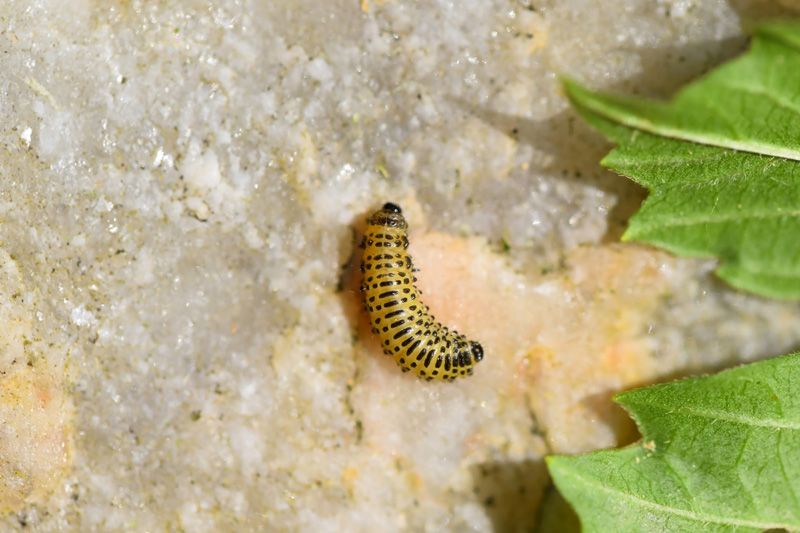
Viburnum Leaf Beetle – Pyrrhalta viburni
Viburnum Leaf Beetle – Pyrrhalta viburni
Description of Insect:
The Viburnum Leaf Beetle (Pyrrhalta viburni) is a small but destructive pest that targets viburnum shrubs, a common ornamental plant. Native to Europe and Asia, the insect is easily recognizable by its elongated body, typically dark brown or black with reddish markings.
Adult Viburnum Leaf Beetles are about 4.5-6.5 mm in length and have a characteristic yellowish-brown coloration. The larvae are cream-colored with dark spots over its body, measuring up to 11 mm in length when fully grown. The larvae are found feeding on the foliage and leaving behind distinct, skeletonized patches, while the adults chew holes in the leaves. Both the adult and larval stages cause damage to the host plant, weakening it significantly over time.
Life cycle of Viburnum Leaf Beetle:
The lifecycle of the Viburnum Leaf Beetle consists of four stages: egg, larva, pupa, and adult. Eggs are laid in small clusters in egg cavities on the twigs of viburnum plants from late June to October. These eggs remain dormant over the winter, hatching in the spring as temperatures warm. The young larvae initially feed on the tender leaves of viburnum plants, passing through three developmental instars. As they grow, the larvae become more voracious, consuming larger portions of the leaf.
Fully grown larvae drop to the ground to pupate in the soil. They remain in the soil for about ten days before emerging as adult beetles. Adults then begin the cycle again, laying eggs on new host plants, producing one generation per year.
Damage they cause:
The Viburnum Leaf Beetle is highly destructive to viburnum plants, which are commonly used in gardens, landscaping, and horticulture.
- Plant Damage:The most noticeable effect of the Viburnum Leaf Beetle is the damage to the leaves. The larvae and adults feed on the foliage, causing holes, skeletonization, and defoliation. Prolonged defoliation can severely weaken the plant, leading to reduced vigor and, in extreme cases, plant death in 2-3 years.The weakened state makes the plant more susceptible to secondary infections, including fungal and bacterial diseases. It also reduces its overall resistance to environmental stress, such as drought or extreme temperatures.
- Aesthetic Damage:Viburnum shrubs are popular ornamental plants, valued for their attractive foliage and flowers. The damage caused by the Viburnum Leaf Beetle can significantly reduce the plant’s aesthetic value, making it less desirable in landscaping settings.
- Economic Impact:In regions where viburnum is a popular nursery crop, the Viburnum Leaf Beetle can pose significant economic challenges. The beetle’s impact on plant health and appearance can reduce the overall marketability of viburnum plants, leading to financial losses.
